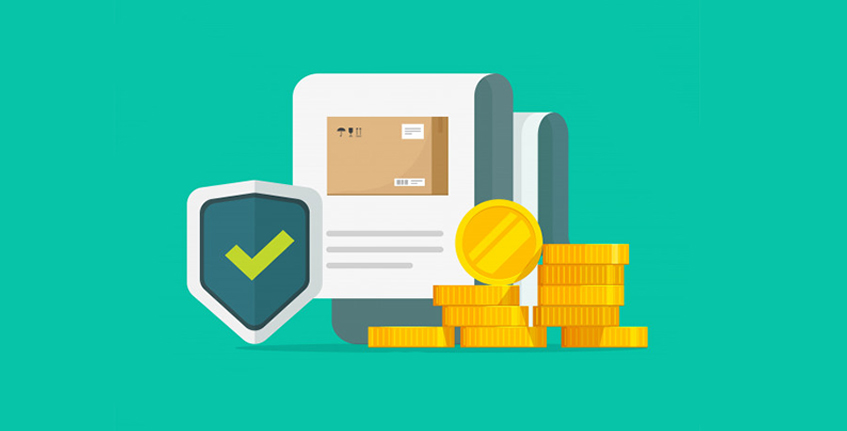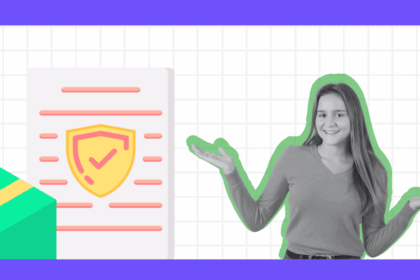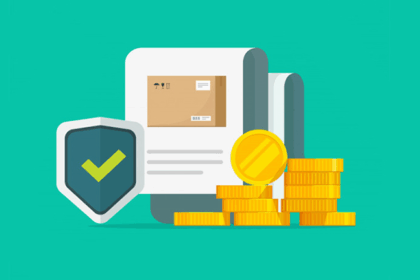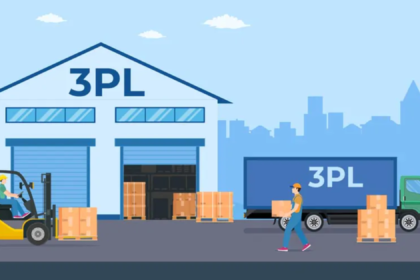Running a full-fledged eCommerce business is no easy feat. You need to juggle product sourcing, marketing, customer support, and, of course, the entire logistics chain.
And honestly, the logistics part alone can eat up most of your time and energy. We’re talking about managing inventory, packing orders, meeting delivery timelines, and ensuring everything runs smoothly.
Third-party logistics (3PL) providers can take that burden off your shoulders.
From sorting products and handling fulfillment to shipping orders to your customers, they ensure your logistics are as seamless as possible without any added effort. Many businesses also turn to 3PL providers to lower their logistics costs. In fact, according to NTT Data, 25% more shippers are outsourcing to 3PLs in 2025 to boost business efficiency and leverage advanced tech capabilities.
But the question is: Is 3PL outsourcing really cost-effective
In this guide, we’ll take a closer look at 3PL pricing, different pricing models, factors that influence this cost, and how you can bag the best deal.
What is 3PL Pricing?
3PL pricing is simply the total cost you pay to outsource your logistics. Third-party logistics providers charge you a fee for their services, which typically include:
- Warehousing
- Order fulfillment
- Packaging
- Shipping
Some providers may also provide additional services like returns management, freight forwarding, etc.
However, when selecting a 3PL provider, most businesses often turn to the cheapest option. And while they’re not necessarily bad, a smarter approach is to compare 3PL pricing based on the value you’re receiving against the cost.
Moreover, there’s also not a one-size-fits-all model. Some providers charge a flat fee. Others bill you based on usage. Let’s understand this in detail.
Common 3PL Pricing Models
3PL services come in all shapes and sizes. Maybe you want the whole package? Maybe you want to pick and choose? Thankfully, there are a variety of 3PL pricing models that you can select from based on what makes the most sense for your business.
1. Activity-Based Pricing
As the name suggests, under this pricing model, you are charged for the individual tasks performed by the provider. For example, you may be charged separately for different activities, like receiving inventory, storing items, or shipping them out.
This 3PL pricing model is suitable if you don’t manage a large volume of orders daily but have a large variety of SKUs. In such situations, activity-based pricing offers better transparency, helping you see exactly where your money is going.
2. Flat Rate Pricing
This model is suitable if you’re seeking a predictable, non-complicated billing process. With flat rate pricing, you pay a fixed monthly fee for a set of services, regardless of how much you use them.
Say a 3PL charges you a flat $5,000 per month to handle warehousing, fulfillment, and shipping. Now, you’ll have to pay this amount every month, whether you process 500 orders or 5,000.
3. Cost-Plus Pricing
The cost-plus pricing model gives you a breakdown of the actual costs the 3PL incurs, like labor, storage, transportation, etc., and then adds a markup for their services. In simple words, you reimburse the provider for the costs incurred and then pay a fee for their services on top.
Let’s say your logistics costs come to $8,000 for the month. If the agreed markup is 20%, you’ll pay $9,600 in total.
4. Fixed + Variable Pricing
This is a hybrid model that lets you pay a fixed fee for limited services, plus extra if you exceed that threshold.
For example, suppose you buy a monthly plan that offers 500 square feet of storage and 800 orders for $5,000. As long as you stay within the inclusions, you’ll be charged $5,000. But if your order volume spikes or you need more space temporarily, these extra services will be billed separately.
5. Outcome-Based Pricing
Under this 3PL pricing model, the provider charges you based on performance instead of services. It is suitable if you have a long-term partnership with the provider and want to achieve shared business outcomes. The idea is simple: when your business grows, so does theirs.
With outcome-based pricing, the 3PL provider gets incentivized to invest in innovation, efficiency, and performance. This isn’t because you’re paying them extra to do it but because it directly impacts their own bottom line.
Key Components of 3PL Costs
Partnering with a 3PL provider doesn’t just mean outsourcing warehousing and shipping. You’re investing in a host of services that come with different costs. Here’s what you can expect:
1. Onboarding and Setup Fees
Most 3PL providers will charge you a one-time fee for onboarding and setup. This typically covers the cost of:
- Integrating your online store with their systems
- Setting up your warehouse space
- Training their staff to handle your operations
The amount may vary depending on the provider, your business size, and tech needs.
2. Receiving and Inventory Handling
This is the cost of receiving your products at the warehouse. It involves unloading, counting, inspecting, and logging your inventory into the warehouse management system (WMS). The provider might charge this fee per unit, per pallet, or by the hour. This means if your inventory is complex or arrives in bulk, you might have to pay more.
3. Storage Costs
Once your products are in the warehouse, the provider will charge you for the space needed to store them. This might be on a per bin, shelf, pallet, or cubic foot basis. Again, the longer you occupy the space or the more space the inventory needs, the higher the cost.
4. Pick, Pack, and Fulfillment Fees
Picking refers to pulling items from storage. Packing includes boxing them up and adding shipping labels or inserts. This is the main activity that ensures your product gets to your customers. The price will depend on the pricing model you select. But if you’re shipping high-volume single-SKU orders, the cost may be minimal.
5. Shipping and Transportation Costs
Shipping cost is calculated depending on multiple factors, such as package weight, size, destination, speed, etc. But since most 3PL providers tie up with major carriers, they might offer you discounted rates. For example, if you ship lightweight items domestically, using the 3PL’s rate could take 20–30% off standard postage.
6. Returns and Reverse Logistics
Returns are inevitable in eCommerce. But handling them comes at a price. Reverse logistics fees typically cover the costs of receiving returned goods, inspecting their condition, restocking, or disposing. These are usually billed per item or per return event.
7. Account Management and Admin Charges
These charges cover the time your 3PL spends on customer service, performance reviews, supply chain planning, and other back-end support. They are often charged as a flat monthly fee. However, some providers may even charge an hourly rate.
8. Custom or Value-Added Services
Sometimes, a standard service might not cut it for your business. You might need customizations or extra services tailored to your needs. For example, kitting, branded packaging, special labeling, etc. These customizations are priced separately, which can vary depending on complexity and volume.
Factors Influencing 3PL Pricing
There are various factors that can influence your 3PL pricing package. Some common elements include:
1. Order Volume
The volume of orders you process through the 3PL can greatly influence its pricing. It’s simple: the more the orders, the better your chances of securing volume-based discounts. You see, fulfilling 50 orders a month would cost more per order than fulfilling 5,000. This is because fixed costs, like warehouse staffing, storage space, etc., would be spread across more units.
For example, a small DTC brand just starting out may pay $3.75 per order. But on the other hand, an established brand fulfilling hundreds daily might see that cost drop closer to $2.25.
2. Package Size and Weight
Shipping a light pack of yarn is wildly different from shipping a 20-pound box of dog food. This difference can jack up your fulfillment fees and carrier charges.
This is because large and heavy packages require extra packing material, padding, and labor. Plus, they can also trigger dimensional weight pricing from carriers like FedEx or UPS, even if the box is large but light. As such, even if the product doesn’t weigh much, it could still be priced pretty high.
Pro Tip: Use the right-sized packaging to avoid dead space in boxes and reduce costs.
3. Location
Another factor that plays a big role in determining 3PL pricing is location – both for the 3PL warehouse and your customers. For example, a warehouse in the Midwest might serve all U.S. zones well. But if 80% of your customers are in California, you’ll end up paying more for shipping and with longer delivery windows.
You can avoid this by splitting your inventory across different warehouse locations to reduce average shipping zones and, ultimately, shipping costs. But remember, this also means you might have to pay more for storage and inventory management across different sites.
4. Tech Integration
Not all 3PL partnerships are plug-and-play. The kind of technology setup you need and how complex it is can also influence the overall cost. For example, if your business requires a high level of automation or real-time data flow, you might need to integrate your systems with the 3PL’s back end. This means using APIs, which often come with setup charges and maintenance fees.
Some 3PLs may also offer access to their internal tools, like warehouse management systems (WMS), which give you visibility into order status, inventory, and shipment tracking. These platforms aren’t always included in the base package, which means you might have to pay extra to access them.
5. Customizations
Anything that isn’t included in the 3PL pricing package will come with an added price tag. For example, you might want to use eco-friendly packaging or kit multiple SKUs into one custom bundle. These extras require additional extra labor, packaging materials, and quality checks, all of which can add to the cost.
Now, we aren’t saying customizations are bad. But you need to budget for them carefully and determine if they’re worth the added cost.
How to Evaluate and Compare 3PL Providers
We’ll reiterate: choosing the cheapest 3PL provider isn’t always a smart decision. At the same time, the most expensive doesn’t always mean the best. So, how do you make the right choice? By broadening your criteria and evaluating other essential factors, too. Let’s look at them in detail:
1. Compare Pricing Against Services
Sure, a low monthly fee might look attractive. But what matters more is what you’re actually getting against it. Some 3PLs might advertise flat-rate pricing but charge extra for:
- Returns processing
- Packaging material
- Customer service support
Whereas, others might charge a higher base rate but offer more robust features like branded packaging or automated inventory updates. The key is to first determine what exactly it is that you’re looking for and find options that provide the most value for your buck.
2. Check Their Geographical Reach
Once you’ve narrowed down your options based on price and services offered, the next step is to look at their geographic footprint. Where are their warehouses located? Compare this information against your customer base to get an idea of shipping costs and delivery speed.
For example, if most of your customers are on the West Coast but your 3PL only ships from New Jersey, you’ll not only have to spend more on shipping but also risk slower delivery times. On the other hand, if the provider has various fulfillment centers across the country, you can lower transit time and cost by spreading inventory closer to major demand hubs.
3. Request a Detailed Cost Breakdown
Finally – and most importantly – don’t settle for the first quote you receive. Ask the provider for detailed pricing, including the receiving fees, pick and pack costs, storage, returns, tech setup, customer support, and even monthly account maintenance (if applicable).
Some providers may also charge for things like long-term storage past a certain period or pallet disposal, which can quickly add up costs if you’re not paying attention.
At the same time, it’s important to inquire about any hidden charges that may creep up later. Remember, the more time you spend on research now, the less headache later.
And once you’ve found the perfect 3PL provider that checks all the boxes, don’t forget to negotiate before finalizing the deal. Let’s walk you through how this is done.
Tips for Negotiating 3PL Pricing
Here are some practical tips for negotiating a fair deal with a 3PL provider:
1. Understand Your Requirements
Before you get to numbers, take a step back. Assess your existing logistics and business requirements. Look at your order volume. Are you shipping 500 orders a month or 5,000? Do you need 2-day shipping, same-day processing, or flexible storage for seasonal spikes? Are you looking for lower costs, faster delivery, and fewer returns?
Once you have a clear picture of what you’re after, you’ll be in a stronger position to negotiate pricing, terms, and even services.
2. Do Your Homework
Don’t limit your research to just what different providers are charging. Look at what others in your industry are paying for similar services. See if there are providers who offer better tech, faster turnaround, or broader geographic reach for the same price.
Benchmark against other 3PLs to check if you’re getting a justifiable quote. This also gives you leverage to push back with confidence if the pricing seems inflated.
3. Negotiate the Total Cost of Ownership
A provider might quote unit pricing like ‘$2 per pick’ or ‘$0.50 per label.’ However, this can often be misleading. Instead, you must focus on the total cost of working with that provider. Think storage, returns, tech setup, and even how long your inventory sits before you’re charged extra.
Ask the provider to give you the full picture, not just the price list. This will help you negotiate the overall price and save money in the long run.
4. Be Flexible
Signing a long-term contract or bundling services like freight and warehousing might give you room to negotiate a better deal. Or maybe you can give them a bit more lead time during non-peak seasons in exchange for lower storage fees.
Remember, negotiation isn’t always about pushing for the lowest price. Sometimes, you can get a lot more value for the same cost. The idea is to agree on a deal that works well for both sides.
Common Pitfalls and How to Avoid Them
Now that you know how to select a 3PL provider and negotiate a fair deal, let’s look at some common pitfalls you must avoid:
1. Going with the Cheapest Option
We’re not saying the cheapest option is necessarily bad. But there are chances that a low-cost 3PL might cut corners with outdated tech, poor communication, or delayed deliveries. And honestly, that’s not really what you want when outsourcing logistics. So, evaluate a provider based on their reliability, transparency, and service quality instead of just the price.
2. Picking a Provider Closest to Your Location
Just because a 3PL has a warehouse near your office doesn’t mean they’re the best choice for your customers. What truly matters is where your customers are. If you’re shipping nationwide or globally, you want a partner with a network that can get orders to your buyers quickly and cost-effectively.
3. Ignoring Scalability
Today, you might just need standard packaging and process just 500 orders in a month. But what about six months from now? How do you accommodate peak seasons, catalog expansions, or promo campaigns? So, make sure to select a provider that can handle volume surges, offers flexible storage space, and has a dynamic system that grows with you.
Wrapping Up
Sure, comparing 3PL pricing is important to partner with a provider that fits your budget. But it’s equally important to partner with one that understands your business, supports your growth, and delivers consistent results. After all, you want your logistics operations to be a growth engine, not a cost center.









